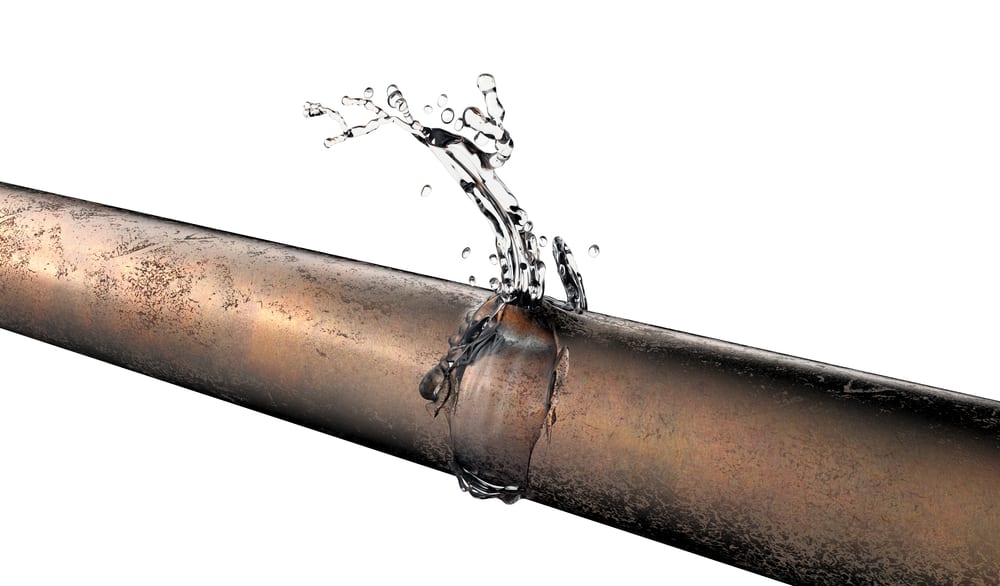Detecting Concealed Water Line Leaks: 6 Ingenious Hacks
Detecting Concealed Water Line Leaks: 6 Ingenious Hacks
Blog Article
This post down below in relation to Leaking water lines is rather captivating. Check it out yourself and see what you think of it.

Early discovery of leaking water lines can minimize a prospective calamity. Some little water leaks may not be visible.
1. Take A Look At the Water Meter
Every house has a water meter. Checking it is a proven way that aids you discover leaks. For starters, turn off all the water resources. Ensure no person will certainly purge, utilize the faucet, shower, run the washing machine or dishwasher. From there, most likely to the meter and also watch if it will change. Since no person is utilizing it, there ought to be no movements. That suggests a fast-moving leak if it relocates. Also, if you spot no changes, wait a hr or more and check back once again. This implies you might have a sluggish leak that could even be underground.
2. Inspect Water Consumption
Analyze your water costs and also track your water consumption. As the one paying it, you should see if there are any type of inconsistencies. If you identify sudden changes, regardless of your intake coinciding, it suggests that you have leakages in your plumbing system. Keep in mind, your water expense ought to fall under the very same array each month. A sudden spike in your costs suggests a fast-moving leakage.
At the same time, a consistent increase every month, even with the same practices, reveals you have a slow-moving leakage that's likewise slowly intensifying. Call a plumber to thoroughly check your building, especially if you feel a warm area on your floor with piping underneath.
3. Do a Food Coloring Examination
When it comes to water intake, 30% comes from bathrooms. If the shade somehow infiltrates your bowl during that time without flushing, there's a leak between the storage tank and also bowl.
4. Asses Exterior Lines
Don't forget to check your exterior water lines also. Test spigots by connecting a yard tube. Needs to water seep out of the link, you have a loose rubber gasket. Replace this as well as make certain all links are tight. If you have actually obtained an automatic sprinkler, it will certainly aid get it skillfully analyzed as well as preserved every year. One small leakage can squander tons of water and increase your water expense.
5. Examine the situation and evaluate
Home owners ought to make it a routine to check under the sink counters and also even inside closets for any type of bad odor or mold development. These two red flags suggest a leakage so prompt interest is needed. Doing regular inspections, also bi-annually, can conserve you from a significant trouble.
Examine for discolorations and damaging as a lot of devices and pipelines have a life expectancy. If you think dripping water lines in your plumbing system, don't wait for it to intensify.
Early discovery of dripping water lines can mitigate a prospective calamity. Some little water leakages may not be visible. Checking it is a surefire means that assists you find leakages. One small leak can waste lots of water and also increase your water expense.
If you presume dripping water lines in your plumbing system, do not wait for it to escalate.
How to Know If Your Home Has a Hidden Leak
Water Meter Reveals Inexplicable Water Usage
If you’d like to test whether or not there’s a leak somewhere in your home, you can do this using your water meter. Here is how to conduct the test:
Don’t use any water in your home for at least 30 minutes; this also means not turning on faucets or water-using appliances.
Go outside, and check your water meter for activity.
If your water meter shows that there was activity, even though no one was using any water, this proves that there is a leak in your home.Visible Mold or Mildew Growth
Leaks behind walls create moist, dark environments that allow mold and mildew to grow and thrive. Eventually, you might see mold growth forming on the wall closest to a hidden leak.
If mold is growing in an area that receives a high amount of moisture, such as a bathroom, it may simply be an indication that better ventilation is needed. However, if you see mold growth on a wall or the ceiling in an area where you would not expect, you probably have a hidden leak.
Musty, Mildew Odor
Sometimes you might not be able to see the mold or mildew that is growing as a result of a leak. However, the smell can give the problem away just as easily. If you catch a whiff of something musty, there’s a good chance that old water is collecting somewhere in your home that you can’t see.
Stained/Warped Walls, Ceilings, or Floors
When your home soaks up water, a variety of red flags can become visible, including ceiling stains, bubbling drywall, warped walls, and sagging floors. While these issues can be caused by excess humidity, they can also be signs that a pipe or plumbing connection has started leaking behind your walls.
Inexplicably High Water Bill
After a while, you get a general sense for what your water bill should be. If you own a pool or sprinkler system, your bill will tend to be higher during summer. However, if you receive a water bill that seems especially high, and you can’t figure out what caused it, then you may have a hidden leak somewhere that’s increasing your bill.
https://www.plumbingjoint.com/blog/2019/july/how-to-know-if-your-home-has-a-hidden-leak/

I'm certainly very excited about Detecting hidden plumbing leaks and I'm hoping you appreciated my page. Appreciated our entry? Please share it. Help another person locate it. Thanks for going through it.
Stress less, ring us. Report this page